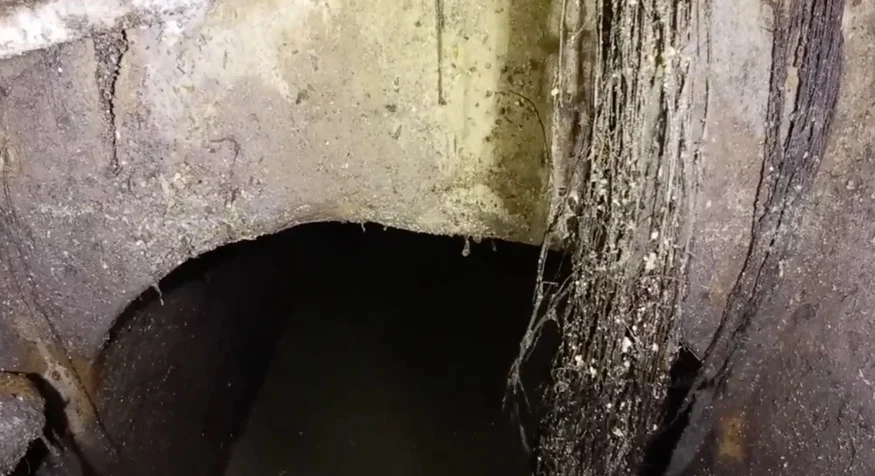At Suez RV Osis, drone technology is revolutionizing how sewer systems are inspected. By using the Elios 2, they’re achieving full coverage in even the most challenging environments. Here’s how it works. Suez RV Osis is a French company specializing in waste management and wastewater infrastructure maintenance. Their work plays a vital role in keeping cities and rural areas functioning smoothly, ensuring that sewage systems remain safe and efficient. Inspecting wastewater systems is a complex task, especially when dealing with old infrastructure or difficult-to-reach areas. Suez RV Osis conducts regular inspections across both urban and rural regions, often in environments that pose serious risks to human safety. These inspections are essential for identifying issues such as clogs, structural damage, and system inefficiencies. Without regular checks, sewer systems can fail, leading to costly repairs and environmental hazards. With a new national law requiring all major cities in France to inspect their wastewater infrastructure by 2026, companies like Suez RV Osis are under increased pressure to deliver accurate and efficient results. In Toulouse alone, over 3,700 kilometers of pipes must be assessed—a massive undertaking that demands advanced tools and techniques. This regulatory push has encouraged innovation. Traditional methods—like manually entering pipes or using carts and cameras—are no longer sufficient for the scale and complexity of modern inspections. That’s where drones come in. A high-resolution image captured by the Elios 2 during a sewer inspection Traditional approaches have limitations. Manual entry is dangerous due to risks like gas exposure, collapsing masonry, and flooding. Even using cameras on carts or floats doesn’t always provide complete visibility, especially in narrow or obstructed pipes. As a result, only about 80% of the wastewater systems Suez oversees can be fully inspected using conventional methods. That leaves a significant portion of the network unexamined—until now. To cover the remaining 20%, Suez RV Osis has turned to cutting-edge technologies, including the Flyability Elios 2 drone. This compact, durable device is designed for indoor and confined space operations, making it ideal for navigating complex sewer networks. "We’ve been using the Elios 2 since its launch, and it’s become an essential tool for our team," says Phillipe Bonnin, Drone Development Manager at Suez RV Osis. "Its cage design allows it to safely maneuver through tight spaces without risking damage to itself or the structure." The Elios 2’s powerful LED lighting and high-resolution camera provide clear, detailed images—even in dark, dusty, or wet conditions. This makes it easier for inspectors to spot cracks, corrosion, root intrusions, and sediment buildup. But the real game-changer is speed. With traditional methods, Suez inspectors could cover around 400–600 meters per day. Using the Elios 2, that number jumps to up to 900 meters daily—nearly doubling their efficiency. Additionally, the team has started using Flyability’s Inspector 3.0 software to map defects accurately. This helps them pinpoint exactly where maintenance is needed, reducing unnecessary digging and saving time and resources. While the Elios 2 is a powerful tool, it’s just one part of a larger process. At Suez RV Osis, each inspection mission follows a structured approach: For deeper access, the team uses range extenders to fly up to 200 meters into a pipe. This allows them to reach sections that were previously out of reach. “The Elios 2’s lighting and image quality make it ideal for underground inspections,†adds Phillipe. “It gives us the clarity we need to detect even the smallest issues.†By integrating the Elios 2 into their workflow, Suez RV Osis has achieved several key advantages: As France moves toward stricter compliance with its new sewer inspection laws, companies like Suez RV Osis are setting a new standard for safety, efficiency, and accuracy in wastewater management. And at the heart of this transformation is the Elios 2 drone—proving that innovation is the future of infrastructure inspection. ESPUMA FLORAL,Floristry Oasis,Oasis Plant Foam,Gardening Foam,Floral Foam Uses SHANGHAI WELLONG IMPORT AND EXPORT CO., LTD , https://www.chinafloralfoam.comSewer Inspections by Drone: How Suez RV Osis Uses the Elios 2 to Ensure 100% Coverage When Inspecting Wastewater Infrastructure
France's New Sewer Inspection Law Sparks Innovation

Embracing Innovation: The Role of Drones in Modern Sewer Inspections
How Suez Plans and Executes Drone Missions
Key Benefits of the Elios 2 for Sewer Inspections
Sewer Inspections by Drone: How Suez RV Osis Uses the Elios 2 to Ensure 100% Coverage When Inspecting Wastewater Infrastructure